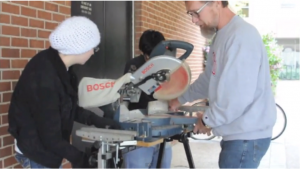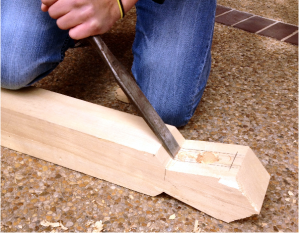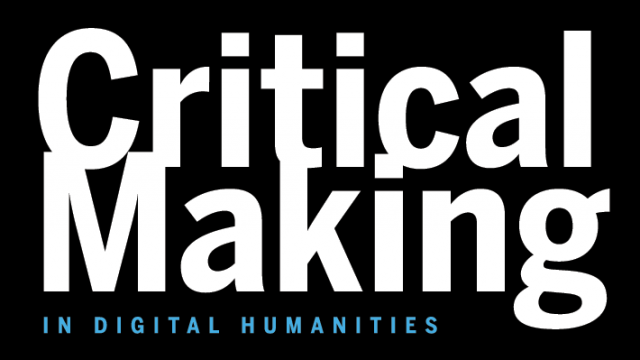News & Updates
The Story in Wood
PI: T. Hugh Crawford, Georgia Institute of Technology
Collaborators: Sarah Dennis, Matt Berens, Shelby White, Andrew Bassett, Itje Okafor, Troy Kleber, Weatherly Langset, John Umberger, Ben Ashby, Albert Shaw, Kale Brown, Megan Fechter, Walter Ley, Zachery Butner, Abhinya Uthayakumar, Sarah Tropper, Brian J. Shin, Olivia Lodise, Ariel Santillan, Dina Mengesha, Georgia Tech
Site: http://thestoryinwood.org
The “Story in Wood” helps students encounter first-hand the Heideggearian distinction between tools ready-to-hand and those present-to-hand, and at the same time enables an exploration of the relationship between modeling, material, and knowledge production. Mediated through readings of Heidegger, Charles Keller, Matthew Crawford, Tim Ingold, along with the history of wood construction in the US, and coupled with plans drawn, coded, and CADed (Computer-Aided Design), this project explores the movement from paper to pixel to model, to wood (and back). The goal was to help students understand the complexity that making entails but also to build on the learning that making produces.

The term “Useless Design” designates a pedagogical practice where the designed product has little or no economic or instrumental value, and the primary skills involved in its production will not likely be useful in a student’s academic or professional career. Learning the basics of timber framing does not generally lead to professionally useful skills for the college graduate. Useless design helps students slow down, focus on and articulate both the familiar and the unfamiliar parts of making. Useless practices prompt naive questioning that probes historical circumstances and social norms. By recasting technology as a set of practices that must be learned and articulated through an historically sedimented space, this project foregrounds making as a process that draws across many disciplines and blurs most of those disciplinary boundaries.

The “Story in Wood” began with a series of readings on wood and material culture. Then, the students chose to collaborate on a project focusing on the history of building practices, skill acquisition, and the role of modeling in producing knowledge. This project asked them to construct three “bents,” or slices of a building that can be assembled as a small structure. The students formed three teams: one researched nineteenth-century building and made a timber-framed bent, one looked at twentieth-century building with dimensional lumber, and the last examined twenty-first century building with plywood slot and tab techniques cut out on a large CNC (Computer-Numerical Control) machine. Although the structure of each project was of interest, I was more interested in process. Students drew plans by hand, CADed, 3d-printed, and laser cut small scale models. They also questioned each step of the process, researched the history of those processes, discussed at length any design proposal, and constantly reframed all forms of mediation. We learned that all materials — wood, 3d printing plastic, pictures, words — are recalcitrant, and that making involved both the design of objects and the design of learning.
